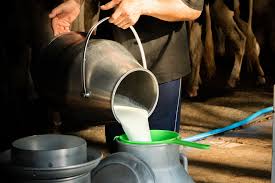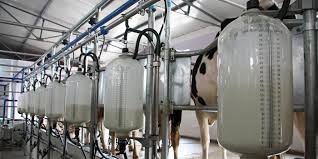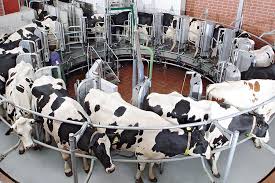In the previous article, the management of the dairy cow was discussed. This article focuses on milk and its products. The development of the dairy industry is largely in the hands of Fulani women, but product development and marketing remain stagnant due to limited access to Western education.
The nomadic lifestyle and lack of government involvement in traditional dairy practices further hinder the growth of this sector.
Definition of Milk
Milk is a fluid food produced in the mammary system of female animals following parturition. It is an emulsion of butterfat and water, with the aqueous phase containing proteins, lactose, minerals, and enzymes.
Read Also: 17 Medicinal Health Benefits Of Mucuna pruriens (Monkey Tamarind)
Properties of Milk

1. Taste and Odour: Milk has a slightly sweet taste and a mild aromatic flavor. The sweet taste comes from lactose, while the flavor is derived from the fat content.
2. Colour: Normal milk has a yellowish-white color due to the presence of fat and small amounts of coloring matter. The breed of the animal and type of feed affect the color, with milk appearing deeper yellow when animals graze on pasture rather than being fed concentrates.
3. Specific Density: Milk is heavier than water. The freezing point of milk is around 31°F, while its boiling point is higher than that of water at approximately 214°F.
4. Cream Rising: When whole milk stands, the fat rises to the top because it is lighter than water, forming a layer called cream, which is packed with fat globules. Agitating the cream through churning results in the formation of butter.
5. Foaming: Milk foams when heated due to air becoming incorporated into thin layers formed by coagulating proteins.
Processing of Dairy Products
Processing refers to the application of various treatments to raw milk to make it safe for human consumption or to convert it into other desirable products. These treatments may include heating, cooling, separating milk constituents, or fermentation.
Reasons for Processing Milk
Raw milk spoils when kept at ambient temperatures over time. Milk obtained from the udder contains different types of bacteria, some of which could cause diseases. Therefore, milk processing is essential for several reasons.
1. Safeguarding Public Health:
This is achieved through pasteurization or sterilization, ensuring the elimination of harmful pathogens.
2. Reduction of Water Content in Milk: Milk contains about 87% water. Reducing the water content, as in evaporated or condensed milk, lowers transportation costs, enhances shelf life, and reduces storage space.
3. Production of Other Desirable Products: Milk can be processed into other products such as cream, cheese, and butter, which conform to industrial and health regulations.
Read Also: Sheep gene insights could help farmers breed healthier animals
Processing Methods

1. Pasteurization: Pasteurization involves heating milk or milk products to a specific temperature for a set time to destroy all pathogenic bacteria. There are two types of pasteurization:
i. Holding Vat or Batch Method: In this method, milk is heated in a holder pasteurizer at a temperature of 62°C for about 30 minutes, then cooled for packaging.
ii. High-Temperature Short Time (HTST) Method: Milk is heated to 72°C for 15 seconds.
Pasteurization kills about 99.6% of all bacteria in milk.
2. Sterilized Milk: Sterilized milk is obtained by treating raw milk at high temperatures (92-97°C) for 16-30 minutes to destroy all microorganisms. Although sterilization ensures safety, it may reduce the vitamin content and alter the flavor of the milk.
3. Evaporated Milk: Evaporated milk is produced by removing water from whole milk at 70-73°C in a vacuum. About 50% of the water is evaporated, and the resulting product is filled into tins and sterilized under pressure. It has an unlimited shelf life at normal temperatures, provided the container is not opened.
4. Milk Powders: Dried milk powders are especially suitable for developing countries because they do not require refrigeration and can be:
i. Easily transported
ii. Easily mixed with other foodstuffs
iii. Available year-round
Milk, skim milk, and buttermilk can all be successfully dried. This process involves pasteurization, condensation of the milk into one-third of its original volume, and then drying by roller or spray drying.
5. Other Processes: Other processes may be used to improve milk’s acceptability and shelf life. For example, milk can be homogenized before heat treatment to reduce fat globule size, preventing the formation of a cream layer. Milk is also sometimes frozen to provide a regular supply year-round, although freezing can cause a rancid flavor in cow’s milk due to the breaking of fat globules.
Packaging and Distribution
The method of packaging and distribution depends on customer requirements and income levels. In many cases, milk is sold unpackaged to provide the most affordable option for low-income customers. However, packaged milk is preferred by some consumers for its convenience, better keeping qualities, accurate measurement, and protection from adulteration.
Various packaging methods include returnable glass bottles, plastic bottles, cardboard cartons, plastic sachets, and sealed cans. Dried milk powder is also a popular choice for distribution in developing countries.
Milk processing is essential to extend its shelf life and ensure safety. Several processing methods are available, and farmers should choose those that can be easily adapted to their operations.
Do you have any questions, suggestions, or contributions? If so, please feel free to use the comment box below to share your thoughts. We also encourage you to kindly share this information with others who might benefit from it. Since we can’t reach everyone at once, we truly appreciate your help in spreading the word. Thank you so much for your support and for sharing!






